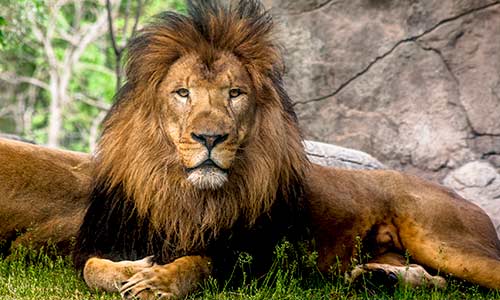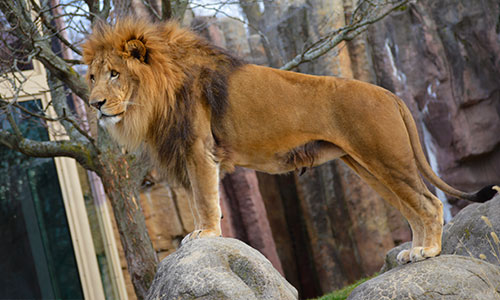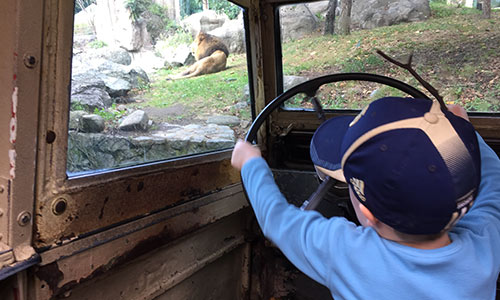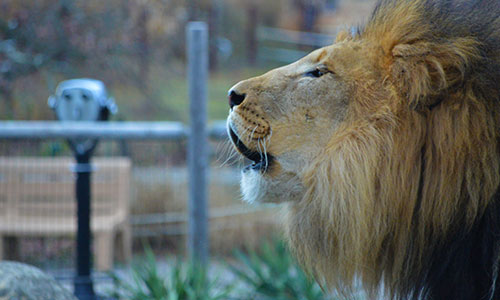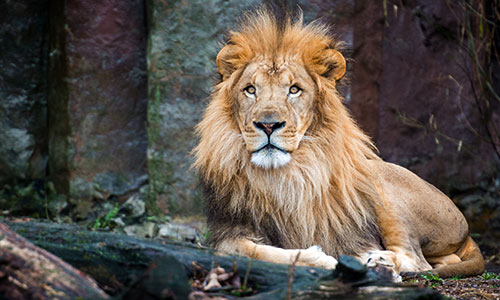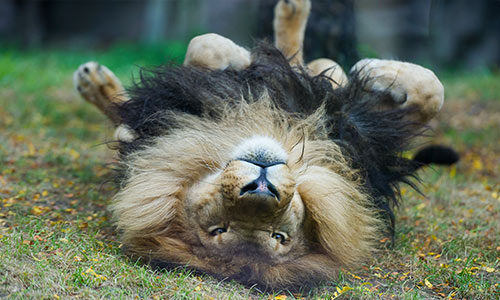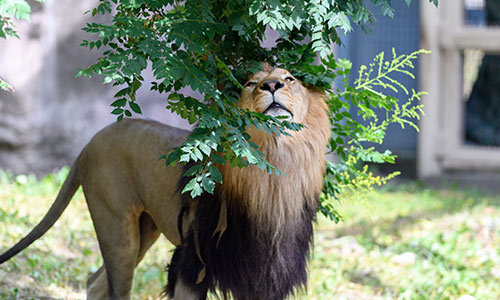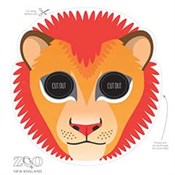African Lion
Panthera leo
About the African Lion

Geographic Range:
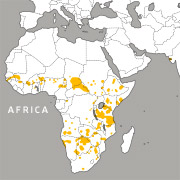
Class: Mammalia
Order: Carnivora
Family: Felidae
Genus: Panthera
Species: leo
Though most big cats are solitary, African lions live in social groups called prides. Prides of lion can be found in the savannah grasslands. Lions hunt in groups, usually females, for wildebeest, zebra, antelope and other small animals. Male lions can even take down a giraffe! They're carnivores, eating only meat. Males have the responsibility of leading the pride by protecting cubs and females from other males and invaders. All lions can roar, including females.
Committed to Conservation
Cheetah, jaguar, leopard, lion, puma, snow leopard, tiger: these majestic big cats are all under threat. Their populations are steadily declining due to poaching, habitat loss, and the illegal trade. Tiger populations have decreased by 95% over the past 100 years and African lion populations dropped by 40% in just 20 years. It's up to us to make the changes—raising awareness, living more sustainably, supporting conservation efforts—that can help reverse these alarming population trends. Here's what we're doing here at ZNE:
African Lion Conservation
We support Lion Landscapes in their community-led conservation efforts to protect large wild carnivores moving out of protected parks and into human-dominated landscapes.
AZA SAFE: Saving Animals from Extinction
We're proud to support the Association of Zoos and Aquariums' SAFE initiative: A commitment to harness our collective resources, focus on specific endangered species, and save them from extinction by restoring healthy populations in the wild. The African lion is one of AZA's SAFE species. AZA organizations are partnering with organizations in Africa to mitigate conflict between farmers and lions, increase monitoring of the lion population’s numbers and distribution, and address habitat loss. The SAFE African lion team will work towards their goals and with the Lion Recovery Fund and Disney's Protect the Pride campaign, to double the number of lions in the wild by 2050.
Species Survival Plan
Zoo New England participates in the African lion Species Survival Plan. By sharing research and knowledge, participating institutions work together to establish guidelines that best ensure the health of captive populations, and with success, the survival of endangered species.
You Can Help!
Snapshot Safari is an interactive, citizen science website where anyone can become African wildlife conservationists. You can explore hidden cameras in the African bush, rigged to take photos any time they sense movement. You can view these, discovering hidden wildlife around Africa. By counting and classifying animals that appear on camera traps, you’re helping scientists monitor how many animals there are in a given area, and how they interact with each other and their environment. This data contributes to vital research and publications that allow these organizations to continue doing the great work they do. Go on safari!
African Lion Facts
Appearance:
Lions are big cats with powerful legs. Their fur is tawny (yellow-brown or tan) in color. Males are generally distinguishable by their large manes. Females don’t have manes. Lions are the only big cat with a tufted tail. They have strong jaws and long canine teeth that have evolved to suit their hunting style in the wild.
Size:
Male 8.5 - 10.8 feet (length); 4 feet (height); 330 - 500 pounds
Female 5.6 - 6.2 feet (length); 3.6 feet (height); 260 - 330 pounds
Diet:
Large mammals such as zebras, wildebeests, giraffes, buffalo and warthogs.
Reproduction:
Lions don’t have a specific breeding season; they mate at various times throughout the year. Mating bouts can last several days. Females may mate with more than one male, so cubs from the same litter may have different fathers. Generally litters are born every other year. The reproductive cycles of females in the pride are synchronized so they can share mothering duties.
Gestation:
100-119 days
Age of maturity: 36 - 46 months (24 - 28 months in captivity)
Number of offspring: two to four cubs in a litter
Behavior:
Lions are the only big cats who are social, living in groups called prides. The primary hunters, females hunt together at night or dawn in groups to make success more likely--this is called cooperative hunting. Males sometimes hunt, but they mainly defend the territory and the pride. When males mature, they typically leave their pride and join another by ousting that pride’s dominant male. Once a new male takes over a pride, he often kills the cubs of the previous male leader. Females try to defend their cubs but are often unsuccessful.
Role in their habitat:
Predator
Habitat/range:
These “kings of the jungle” don’t actually live in the jungle—their habitat includes grasslands and savannas, dense bush and woodlands. Lions live mainly in Africa, but there is also a very small, critically endangered population living in India. Habitat loss and hunting are impacting lion populations.
Median Life Expectancy:
16.9 years
Fun Facts
- Lions rest up to 20 hours per day.
- Both males and females roar, and the roar can be heard three to five miles away.
- Lions are the second largest living cats after tigers.
- Top speed: 33 miles per hour, for short distances. Lions are sprinters, not long-distance runners.
- A male lion's mane relates to his biological fitness. It takes more energy for a lion to grow a darker mane. Female lions are more attracted and therefore more likely to mate with males with darker manes. They may see this as a sign of being more fit.
You Can Find This Animal in the Kalahari Kingdom
Just for Kids!
Jungle Bungle
These “kings of the jungle” don’t actually live in the jungle at all! Their habitat includes grasslands and savannas, dense bush and woodlands.
Zoodopt a Lion!
Zoodopts support the care and feeding of our animals, and with each purchase, we'll bring a little of the Zoo to you! Zoodopt today!
You May Also Like
At Franklin Park Zoo:
At Stone Zoo:

